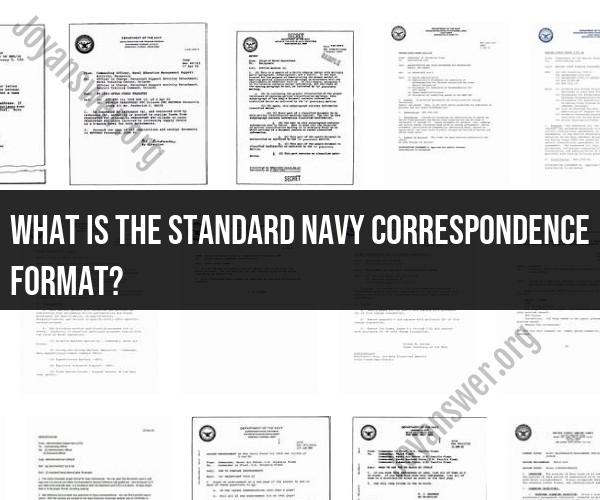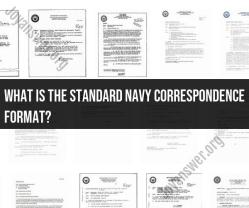What is the standard Navy correspondence format?
Crafting standard Navy correspondence involves following specific formats and guidelines to ensure clear and effective communication within the United States Navy. Proper correspondence is crucial for conveying information accurately and maintaining professionalism. Here are some key formats and guidelines to consider:
1. Types of Navy Correspondence:Navy correspondence includes various types of documents, such as letters, memorandums, directives, messages, and reports. Each type has its own format and purpose.
2. Standard Letter Format:When crafting a standard letter, adhere to the following format:
- Header: Include the official letterhead, which typically consists of the sender's office, name, rank, and contact information.
- Date: Indicate the date the letter is written.
- Recipient's Information: Include the recipient's name, rank, title, and address.
- Salutation: Begin with the appropriate salutation (e.g., "Dear Captain Smith").
- Body: Write the content of the letter, addressing the purpose of the correspondence.
- Closing: End the letter with a closing phrase (e.g., "Sincerely") followed by the sender's typed name, rank, and title.
- Signature Block: Leave space for the sender's handwritten signature above the typed name.
3. Memorandum Format:A memorandum (memo) is used for internal communication. Its format is more concise and straightforward:
- Header: Include the official memorandum format, including the sender's information, date, and subject.
- Recipient's Information: Optionally include the recipient's information.
- Subject Line: Provide a clear and concise subject line.
- Body: Write the content of the memorandum.
- Signature Block: End with the sender's typed name, rank, and title.
4. Directives and Messages:Directives and messages often follow specific Navy formats, including message headers, precedence levels, and message text. These formats ensure that communication is understood quickly and accurately.
5. Reports and Documents:When creating reports and documents, maintain consistency in formatting, headings, and sections. Follow any Navy guidelines specific to the type of report you are preparing.
6. Clarity and Conciseness:Navy correspondence should be clear, concise, and to the point. Use plain language and avoid jargon or overly technical terms that might not be understood by all recipients.
7. Tone and Professionalism:Maintain a professional and respectful tone in all correspondence. Address superiors by their appropriate titles and show proper respect to all recipients.
8. Proofreading and Review:Before finalizing any correspondence, carefully proofread and review the document for errors in grammar, spelling, formatting, and content.
9. Follow Navy Guidelines:Follow any specific Navy guidelines or directives related to formatting, content, and distribution. Adherence to these guidelines ensures consistency and compliance.
10. Signature Authority:Ensure that correspondence is signed by the appropriate authority. Navy regulations define who has the authority to sign certain types of correspondence.
It's important to note that the United States Navy has its own set of regulations and guidelines for correspondence. Familiarize yourself with Navy instructions, manuals, and templates to ensure that you are creating correspondence that meets the Navy's standards for professionalism and communication.


